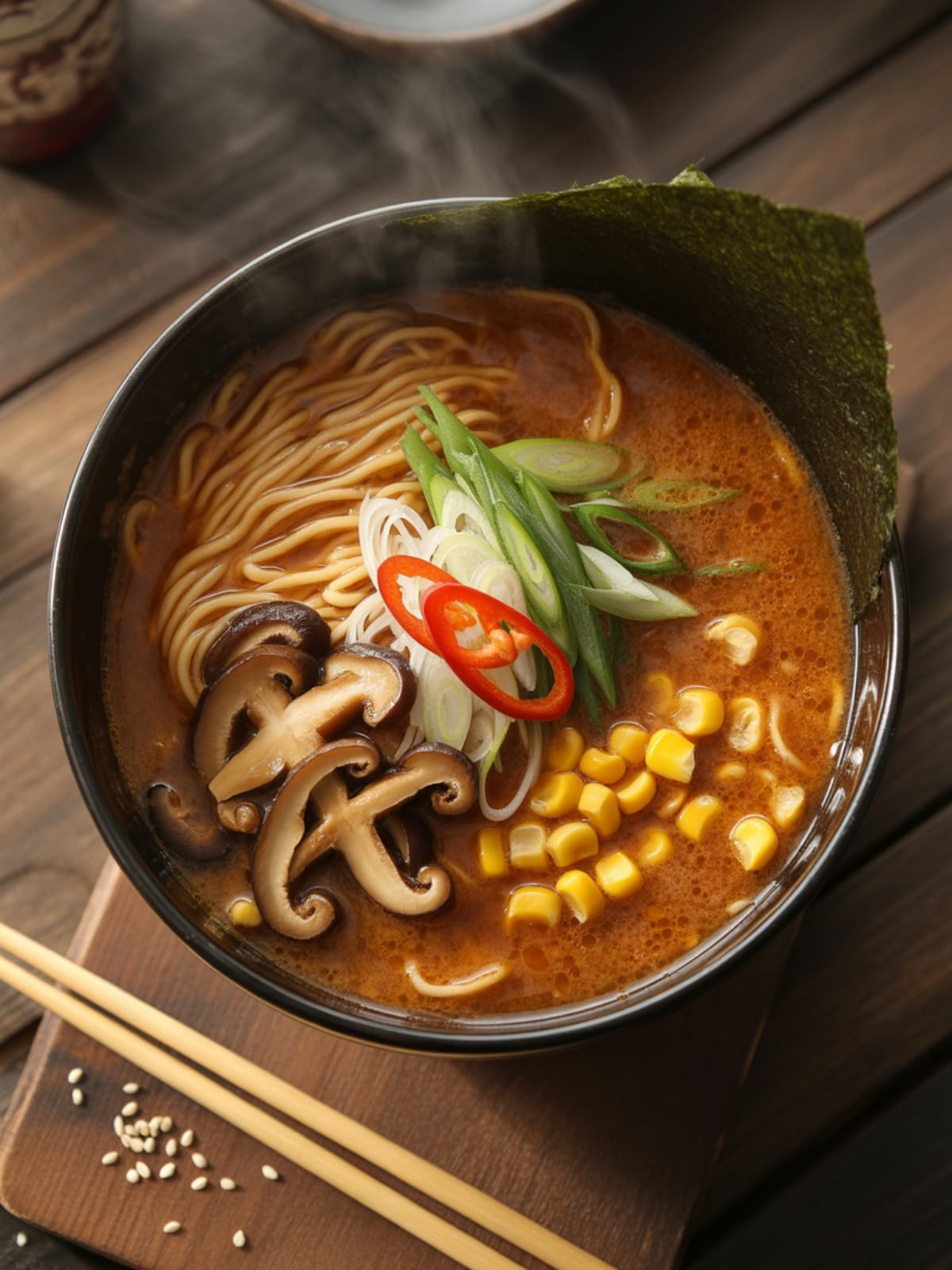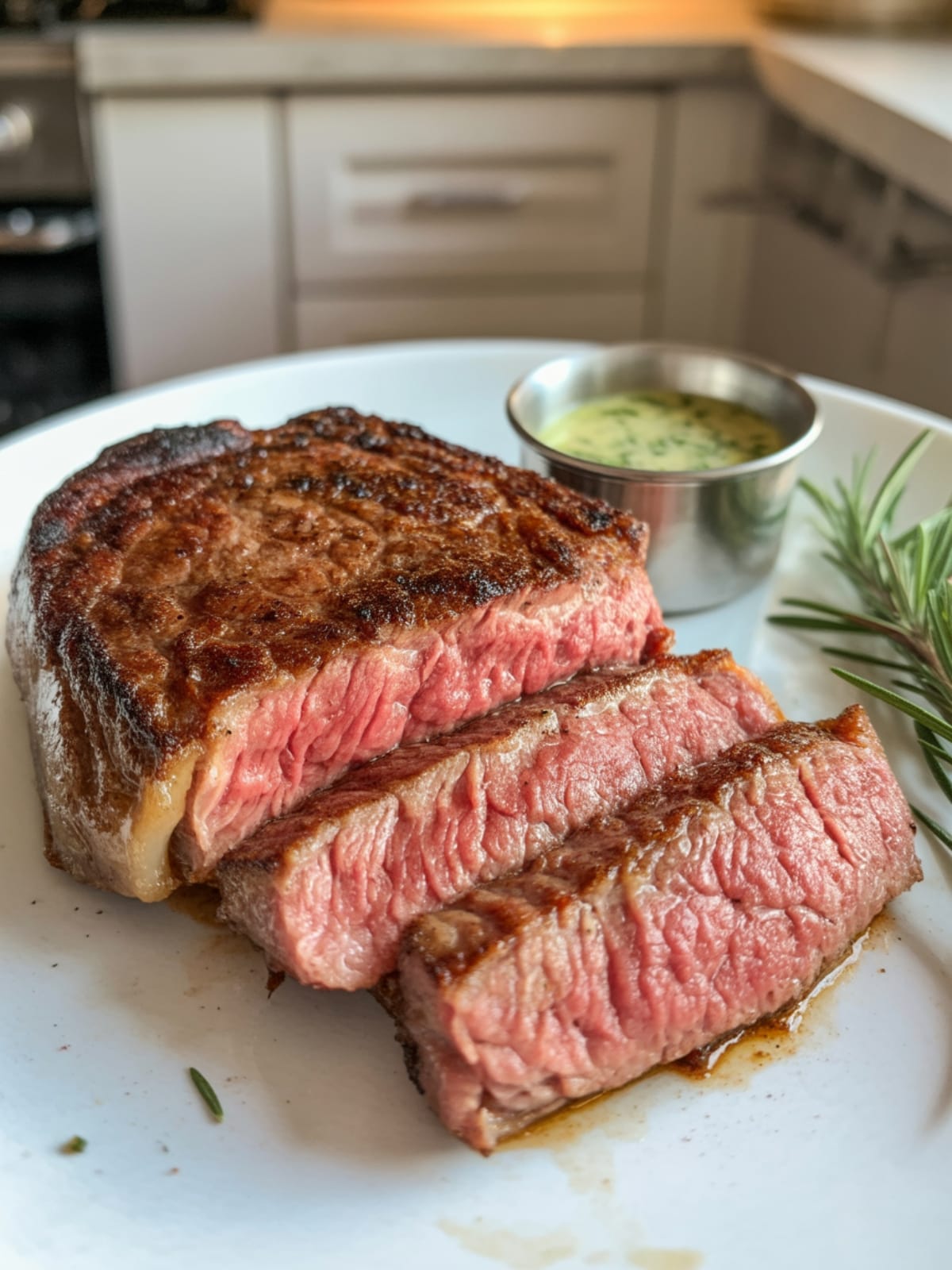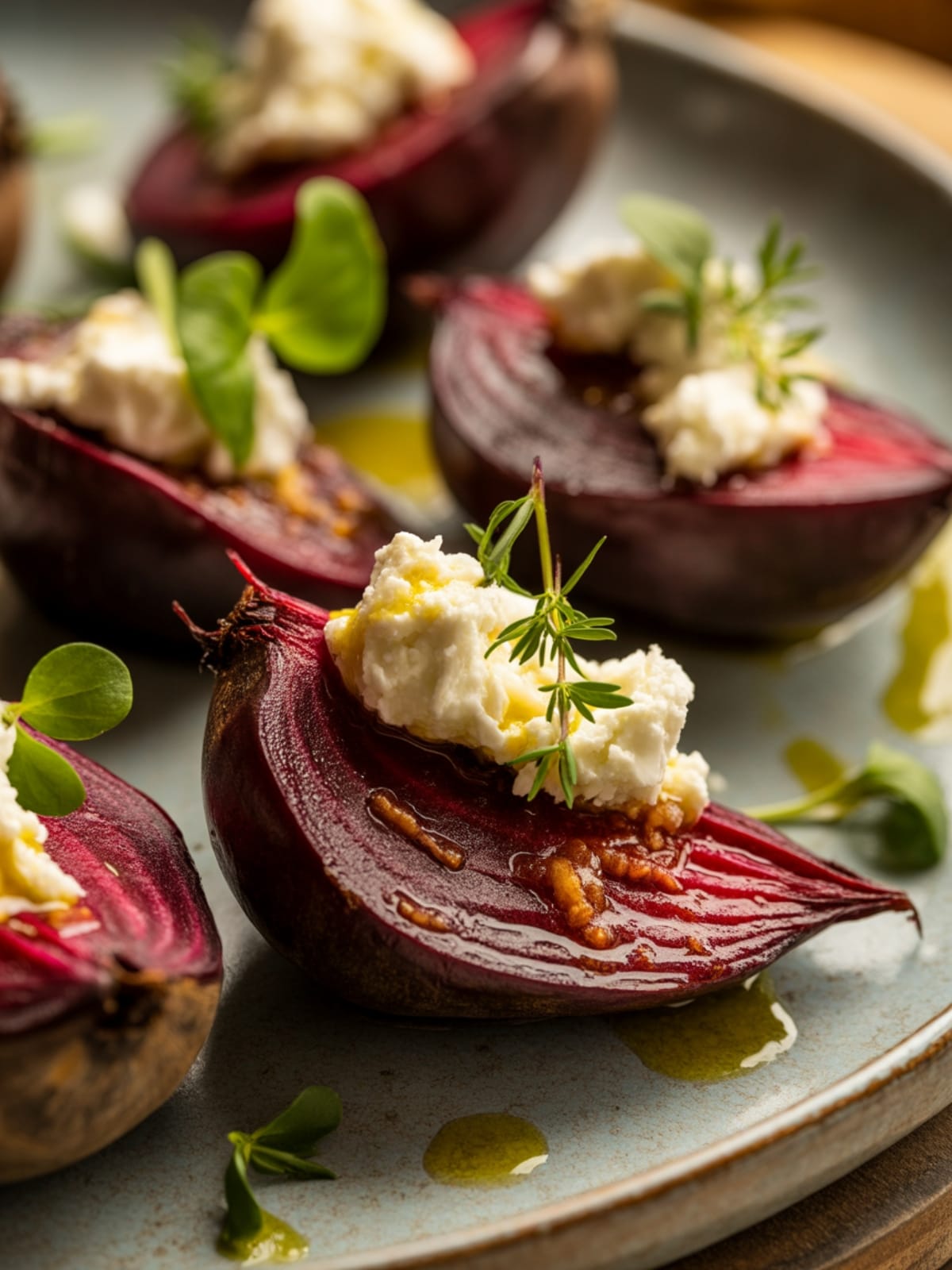Have you ever craved that soul-warming comfort of restaurant ramen but thought it was too complex to make at home? I felt exactly the same way until I discovered this game-changing Easy One-Pot Spicy Miso Ramen (Vegan) recipe. This isn’t just another noodle soup—it’s a flavor explosion that comes together with surprising simplicity.
The rich, umami-packed broth carries hints of spice that warm you from the inside out, while chewy noodles and fresh vegetables create a complete meal that feels both indulgent and nourishing. The best part? Everything happens in one pot, meaning less cleanup and more time to enjoy your creation.
Why This Recipe is Awesome
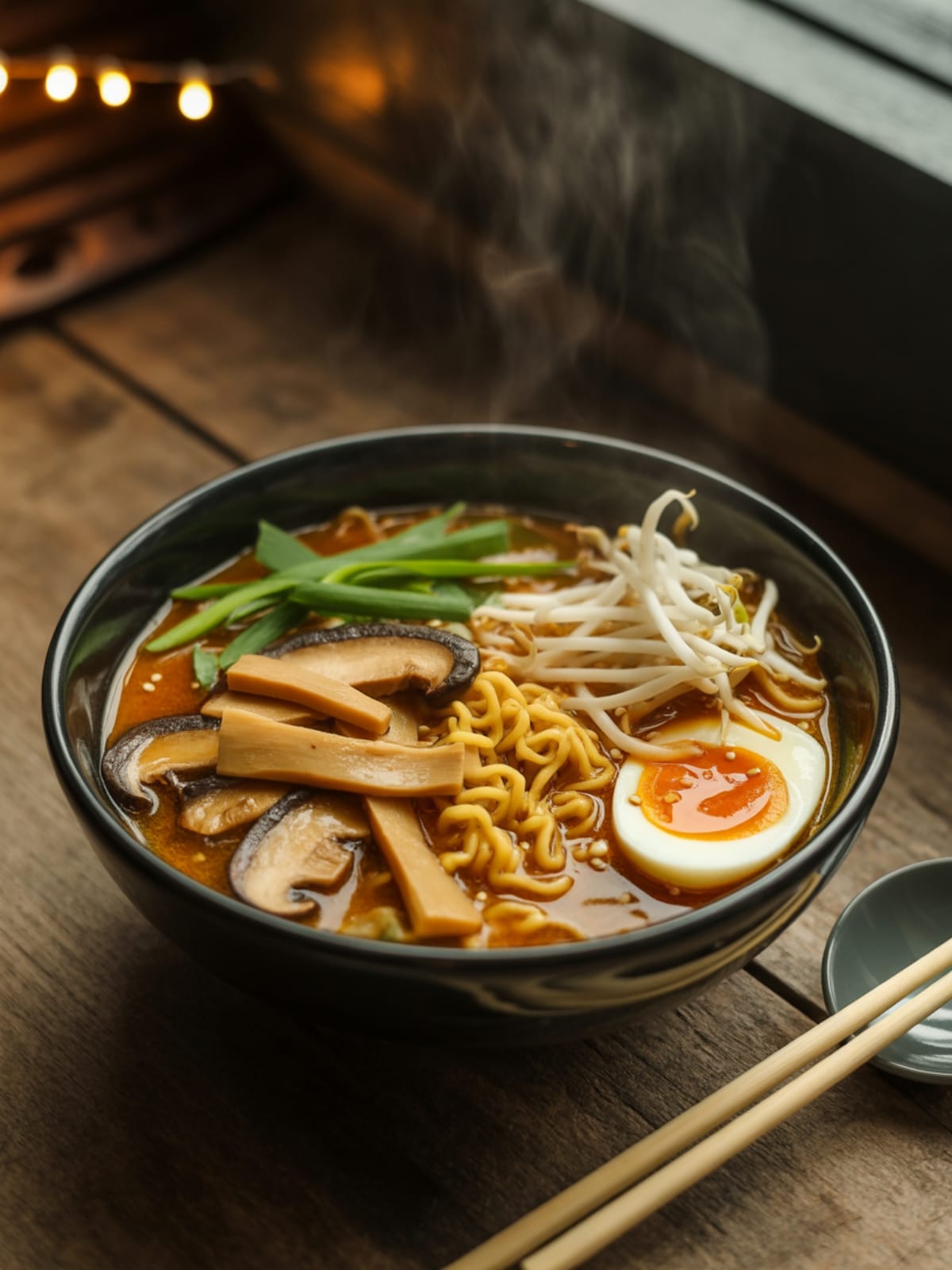
This Easy One-Pot Spicy Miso Ramen stands out because it delivers authentic Japanese flavors without requiring hard-to-find ingredients or culinary school techniques.
The miso paste creates depth that typically takes hours to develop, but here you’ll achieve it in about 30 minutes. What I especially love is how customizable this recipe is—it’s a perfect canvas for whatever vegetables you have on hand. The natural creaminess from the miso eliminates the need for dairy, making this completely plant-based without sacrificing richness.
For busy weeknights, this recipe is a revelation. It offers the comfort food satisfaction you crave after a long day, with minimal effort and maximum flavor payoff. The single-pot approach means you can focus on enjoying the process rather than dreading the cleanup.
Equipment needed: Large pot or Dutch oven, cutting board, knife, measuring spoons, ladle
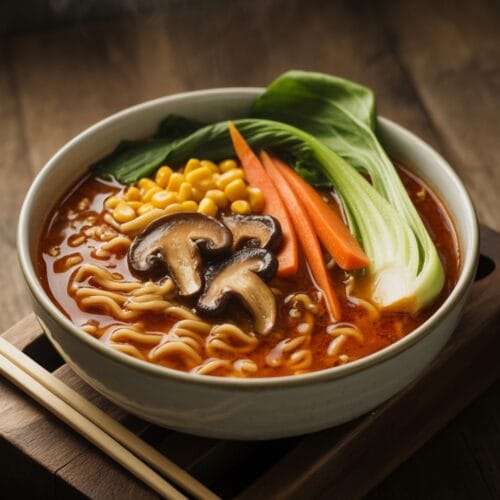
Easy One-Pot Spicy Miso Ramen (Vegan)
Ingredients
- 8 cups vegetable broth low-sodium preferred
- 4 tablespoons white or red miso paste
- 2 tablespoons tahini or peanut butter adds creaminess
- 1-2 tablespoons chili oil or sriracha adjust to your spice preference
- 3 cloves garlic minced
- 1 tablespoon fresh ginger grated
- 2 tablespoons soy sauce or tamari for gluten-free option
- 1 tablespoon rice vinegar
- 1 tablespoon maple syrup or brown sugar
- 1 medium onion thinly sliced
- 2 carrots julienned or cut into thin rounds
- 8 oz mushrooms shiitake or cremini, sliced
- 1 cup baby spinach or bok choy
- 14 oz ramen noodles use rice noodles for gluten-free
- 4 green onions thinly sliced for garnish
- Optional toppings: corn kernels sliced radish, bean sprouts, sesame seeds, nori strips
Instructions
- Create your flavor base: In a large pot over medium heat, add 2 tablespoons of water or oil. Add the sliced onions and sauté for 3-4 minutes until translucent. Add the minced garlic and grated ginger, cooking for another 30 seconds until fragrant.
- Build the broth: Pour in the vegetable broth and bring to a gentle simmer. In a small bowl, whisk the miso paste with about ½ cup of the hot broth until smooth, then return this mixture to the pot. This prevents the miso from clumping.
- Add remaining broth ingredients: Stir in the tahini or peanut butter, chili oil, soy sauce, rice vinegar, and maple syrup. Allow the flavors to meld for about 5 minutes on low heat, being careful not to boil the broth after adding miso (high heat destroys its probiotic benefits).
- Cook the vegetables: Add the carrots and mushrooms to the simmering broth. Cook for about 5-7 minutes until the vegetables begin to soften but still maintain some bite.
- Prepare the noodles: Add the ramen noodles directly to the pot and cook according to package instructions, usually 2-3 minutes for fresh noodles or 4-5 minutes for dried ones. Stir occasionally to prevent sticking.
- Finish with greens: Just before serving, stir in the spinach or bok choy and allow to wilt for about 30 seconds.
- Serve immediately: Ladle the ramen into bowls, ensuring each portion gets a good mix of noodles, vegetables, and broth. Top with sliced green onions and any optional toppings of your choice.
Notes
- For extra depth of flavor, toast 1 tablespoon of sesame seeds and add them to the broth.
- The broth can be made ahead of time and stored for up to 3 days in the refrigerator. Simply reheat and add fresh noodles when ready to serve.
- If you prefer a thicker broth, mix 1 tablespoon of cornstarch with cold water and add to the simmering broth.
- For a protein boost, add cubed tofu, tempeh, or edamame with the vegetables.
- The spice level can be adjusted easily—start with less chili oil and add more to taste.
Calories & Nutritional Info
- Calories: Approximately 320 calories per serving
- Protein: 12g per serving
- Carbohydrates: 58g per serving
- Fat: 6g per serving
- Fiber: 5g per serving
- Sodium: 980mg per serving (varies based on broth type)
- Allergens: Soy, wheat (if using regular ramen noodles), sesame (if using tahini)
- Dietary notes: Vegan, dairy-free, can be made gluten-free with tamari and rice noodles
Common Mistakes to Avoid
- Boiling the miso: High heat destroys miso’s probiotic benefits and complex flavors. Always add miso at the end of cooking and keep the broth at a gentle simmer.
- Overcooking the noodles: Ramen noodles cook quickly and continue softening in the hot broth. Aim for slightly firmer than your preferred texture when tasting.
- Not preparing ingredients in advance: This recipe moves quickly once you start cooking, so have everything chopped and measured before turning on the heat.
- Skipping the flavor-building steps: Don’t rush sautéing the aromatics—those few minutes developing the garlic and ginger flavors make a significant difference.
- Forgetting balance: A great ramen broth needs sweet, salty, sour, and umami elements. If your broth tastes flat, it may need a touch more vinegar, sweetener, or soy sauce.
Alternatives & Substitutions
- Gluten-free option: Use rice noodles or 100% buckwheat soba noodles and replace soy sauce with tamari or coconut aminos.
- Lower sodium version: Use low-sodium vegetable broth and reduce the soy sauce by half, adding more to taste if needed.
- No miso paste? While not ideal, you can substitute with 2 tablespoons of vegetable bouillon plus 1 tablespoon tahini for a similar umami effect.
- Vegetable variations: Feel free to use any vegetables you have on hand—bell peppers, broccoli, snow peas, or corn all work beautifully.
- Heat alternatives: Instead of chili oil, try gochujang (Korean chili paste), sambal oelek, or even a dash of cayenne pepper.
- Time-saving option: Use pre-chopped frozen vegetable mixes designed for stir-fry to cut prep time in half.
FAQs
Can I make this recipe ahead of time?
Absolutely! The broth actually improves with time as flavors meld. Make the broth and store it separately from the noodles for up to 3 days. When ready to eat, heat the broth, cook fresh noodles, and add your toppings.
What type of miso paste works best?
White miso (shiro miso) provides a sweeter, milder flavor ideal for beginners, while red miso offers deeper, more intense flavor. For this recipe, either works well—use white for a gentler taste and red if you prefer more robust umami notes.
How can I add more protein to this vegan ramen?
Great question! Try adding cubed firm tofu (pan-seared beforehand for texture), tempeh crumbles, edamame beans, or even a handful of cashews. For non-vegans, a soft-boiled egg makes a traditional addition.
My broth seems thin—how can I make it creamier?
Increase the tahini or peanut butter to 3-4 tablespoons for added richness. Alternatively, blend 1/4 cup of the cooked vegetables and broth, then return this puree to the pot for natural thickening without added ingredients.
Can I reduce the spice level for kids?
Definitely! Simply omit the chili oil from the main pot and serve it on the side for adults to add to their individual bowls. The miso broth has plenty of flavor even without the heat component.
What’s the best way to store leftovers?
Store the broth and noodles separately if possible. If already combined, refrigerate in an airtight container for up to 2 days. The noodles will absorb broth over time, so you might need to add more liquid when reheating.
Final Thoughts
This Easy One-Pot Spicy Miso Ramen proves that restaurant-quality food doesn’t require complicated techniques or hours in the kitchen. It’s a recipe that invites creativity and personalization—make it your own and don’t be afraid to experiment with different vegetables and toppings. The joy of homemade ramen isn’t just in the eating but in creating a nourishing bowl that reflects your unique taste preferences.
